St Emilion 2000, 15 years on
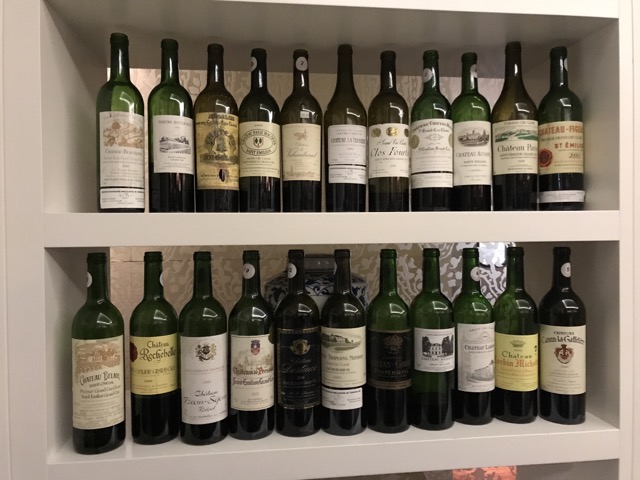
15 years in bottle: How do the “big boys” compare?
By Panos Kakaviatos for wine-chronicles.com
2 May 2017
Since January this year, I had wanted to organize a blind tasting of Saint Emilion 2000, to compare the top classified growths against “lesser” pedigrees.
It would be a follow up to a blind tasting that I had organized in Strasbourg back in June 2005, to compare the then, virtually nouveaux nés 2000s. So I contacted my wine tasting pal Kevin Shin, in Washington D.C., who liked the idea, to help out with a venue and to get a group together, for what are now adolescent Saint Emilions: still youthful, but at least approaching early drinking windows.
Each participant brought wines, including Ausone and Cheval Blanc. I brought, for example, the two Beau Séjours, Angélus, Figeac, Canon La Gaffelière, Bélair, one of two Clos Fourtets.
Many thanks to the Association de Grands Crus Classés de Saint-Emilion for donating several bottles on behalf of their members to take part in the blind tasting, that included, as previously mentioned, many “heavy weights,” including as well Pavie, Pavie-Macquin, Troplong Mondot, Valandraud and others.
And thanks, too, to the owner of Château Corbin-Michotte, a wine that should not have been demoted in the last assessment of the Saint Emilion, in my opinion. And the tasting showed that it was a well esteemed wine.
2000 vintage, “modernity” vs. “classicism”
Some of the Saint Emilion 2000s – like Château Figeac – tasted over dinner in a private room (our tasting venue) of the Rosewood Hotel’s Grill Room in Washington D.C. seemed more ready “to go” while others seemed more youthful (one or two, even primary) in their tannin and structure.
The vintage of 2000 was interesting in that we had not yet seen Right Bank “excesses” of the so-called modern era, with ultra (too) ripe Merlot and too high alcohol levels: these came in 2005 and reached a peak with the 2009-2010 vintages. You can read my article about that theme in this 2008 issue from Decanter.
Even so, some wines did come across a bit heavy handed in their approach, with somewhat oak derived and drying tannins and, depending on subjective tastes, scores varied.
The Garage Movement on the Right Bank was resonating influence and no doubt influenced some of the winemaking. On the other hand, some of my own pre-conceived notions were tested, for example, when it came to Valandraud and to Pavie. Sure, the 2003 Pavie was too much, but is the terroir of this estate in the 2000 vintage beginning to shine through with 15 years in bottle?
It seemed so, based on this tasting.
In the year 2000, there were more so-called traditionalist winemakers, including Pascal Delbeck at Château Bélair (today under ownership of the Moueix family and called Bélair-Monange). And there seemed, back then, more harmony in the entire appellation, now still mired in lawsuits over the latest reassessment of its rankings.
Take for example the defunct Association des premiers grands cru classés, which had brought together all of the wines in that highest of categories (except for Ausone) in annual tastings. I had always looked forward to the black-tie events over Vinexpo, when representatives of each estate opened older vintages. Fond memories of 1961 and 1959 Figeac come to mind, among others. Back in 2005, the association kindly sent me one bottle each of the 2000 vintage to taste blind. Here the notes from that tasting:
http://www.connectionstowine.com/bordeaux/st-emilion-now-and-zen/#tasting%20notes
Interestingly, our group in 2017 (not the same group of tasters as in 2005, where the tasting took place in Strasbourg) tasted many of the same wines from the 2000 vintage tasted in Strasbourg back in 2005. So it was great to see how the wines have evolved since the last time I enjoyed such a comprehensive comparative tasting of the 2000 vintage in Saint Emilion.
How did the wines do? Well, as ever, blind tastings can be equalizers. We start with some whites.
Wines in bold I liked in particular; when red and bold, even more and if underlined, a sort of wine nirvana.
First off, we enjoyed white wines to warm up the event, served non blind, and I adored absolutely the 1996 Champagne Salon, tempted to think in terms of “100 points,” as it was nearly as perfect as one could get!
The Pol Roger Blanc de Blancs 2002 was delicious, too, and I really enjoyed the crisp fruit expression of the Sandlands Chenin Blanc Amador County 2015. It was my first ever experience with this wine, and nothing “New World” cliché about it. It was a pleasure. As Kevin Shin wrote, in his review of our evening: “Beautiful balance and freshness”.
On to Saint Emilion…
Indeed, Kevin in his careful review, averaged the overall scores among the eight tasters, all non industry, based in the Washington D.C. area, but long term buyers and experienced connoisseurs. and the top average were, in order: 1. Pavie, 2. Valandraud and 3. Angelus. My top three were, in order, 1. Cheval Blanc, 2. Pavie and a tie between 3. Clos Fourtet and 3. Valandraud.
It is important to emphasize that a single blind tasting doesn’t reveal some kind of absolute truth or fact, but at least our tasting showed that some of “lower hierarchy” wines we’re not too far behind and sometimes tasted better that evening then some “higher hierarchy” wines. At least with 15 years in bottle.
Of course there could be the factor of a less than optimal bottle, which could explain, say, Ausone. And group dynamics always play a role or the mood of the taster! But conditions were good (although it was getting a bit too warm in the room, which over time may have accentuated the alcohol content). Bravo to the staff of the Grill Room at the Rosewood, for excellent service and fine dining.
It was an interesting tasting indeed, and we look forward to revisiting many of these wines again in, say, five years…
Flight One
2000 Château Figeac – France, Bordeaux, Libournais, St. Émilion Grand Cru
One taster gave it 98 points, while two others could not get past the green notes. When I first tried it, I liked it quite a bit, but it was not as impressive as it was back in 2005, when I had organized a similar 2000 Saint Emilion tasting with many of these wines. Still, the soft expressions, tertiary aromas and damson-like sweetness proved endearing to me. Yes, with some green pepper (former director Eric d’Aramon, in a Figeac vertical a few years back in Washington D.C. admitted to having picked the vintage “too early”), but that did not bug me so much. While I was far from 98 points (I gave it a solid 93), I did enjoy it – and pictured myself enjoying it over the steak that I ordered for later. (93 pts.)
2000 Château Valandraud – France, Bordeaux, Libournais, St. Émilion Grand Cru
Perhaps the biggest surprise for me from this tasting – and for many of us – was Valandraud. Made by Bad Boy Garagiste Jean-Luc Thunevin himself. I must now eat humble pie in my previous critiques of this estate, as the 2000 showed very well. Coming after what turned out to be Figeac 2000 (the first wine we tasted blind), the Valandraud seemed to have more depth, somewhat more tension overall in its expression, and with impressive aromatic complexity. It certainly did not come across as a heavy-handed “modern” wine that dried up on the finish with oak derived tannins. So, bravo to Jean Luc Thunevin and his wife Murielle. (95 pts.)
2000 Château Cheval Blanc – France, Bordeaux, Libournais, St. Émilion Grand Cru
The best overall. Racy elegance and power. I loved the pristine focus and fine lift and freshness on the finish. A Médoc like cassis flavor with finely crushed fresh mint and tobacco leaf. There was sumptuous juiciness on the mid palate, red and dark fruit, but the focus here was on the still quite youthful tannin, rather pronounced in this bottle, but then the precision and supreme length left a great memory for me here, as unmarked by oak “bigness” or suggestions of sweetness as some others showed. For example, later on, I poured Angelus in one glass and Cheval Blanc in the other: Cheval Blanc showed more lift and less oak derivation. One could sense the “breed” of this great wine – and it was great indeed. (97 pts.)
2000 Château Larroque – France, Bordeaux, Libournais, St. Émilion
One of the bottles donated to us for this tasting via the Association de Grands Crus Classés de Saint-Emilion. Tasting it earlier to prepare for the blind tasting (and to check for cork), it came off solid and delicious, with plenty of juicy fruit. I did not feel that it was overripe, as some participants did, but just a touch simple, by comparison to some other wines. A long and rich finish. (90 pts.)
Flight Two
2000 Château Canon-la-Gaffelière – France, Bordeaux, Libournais, St. Émilion Grand Cru
Wine #5 turned out to be a delicious and a relatively more economically priced edition when compared to the very big boys. Yes, Château Canon La Gaffeliere, which was promoted to Premier Grand Cru Classé later, was but a grand cru classé in 2000. I recall enjoying it after it had been just bottled in 2003. And in 2017, I gave it one of my highest scores because it gave off minty fresh chocolate aromas and ripe plum, and effused impressive tannic grip. This wine has evidently more time ahead of it, but is delicious today. Bravo to Stephan Von Neipperg! (94 pts.)
2000 Château La Clusière – France, Bordeaux, Libournais, St. Émilion Grand Cru
The sixth wine, just after the Canon La Gaffelière, I liked nearly as much, and it is apparently a rare wine – Château La Clusière – because former owner Gerard Perse only made a few vintages of it before incorporating it into Château Pavie. It has quite a bit of tannic grip, too, with a smooth feeling on the palate, albeit just a bit too overripe, for my taste, and somewhat hot on the finish. Given subjective taste differences, I can see how many would love this more. (93 pts.)
2000 Château Franc-Mayne – France, Bordeaux, Libournais, St. Émilion Grand Cru
Wine #7 – another wine donated to this tasting via the Association de Grands Crus Classés de Saint-Emilion – proved to be one of those excellent QPRs from the evening. It pleased many a palate, some who had never heard of it, as quite juicy and delicious, if just a tad drying to me on the finish. It came from a magnum bottle. Overall crowd pleasing in its mid-palate juiciness. Several wanted to note the name when I explained that the prices are very competitive, so bravo to charismatic owner Hervé Laviale and thanks for sharing a bottle with us to taste. For those of you who plan to visit Saint Emilion, Laviale has a superb bed and breakfast at the château. (94 pts.)
2000 Château Ausone – France, Bordeaux, Libournais, St. Émilion Grand Cru
Many were left a bit perplexed by this bottle as wine #8, which turned out to be Château Ausone. It came across as somewhat disjointed, even burly, with alcohol coming to the fore and some dry tannin on the finish. Sure, it has some mighty concentration, but where is it going? Was it the bottle? Indeed, I had more pleasure with the Figeac. And another taster who agreed, wondered aloud: “Notice how the weakest wines are the final wines in each flight so far?” But, hey, this was blind, and no doubt time will tell with this bottle. Maybe, time-wise, the bottle itself was “in a bit of funk”. Or we were! (91 pts.)
Flight Three
2000 Château Angélus – France, Bordeaux, Libournais, St. Émilion Grand Cru
Wine #9 was none other than Château Angélus, a bottle I brought to the tasting. Much concentration with dark fruit that is ripe with some notes of chocolate. I have had the 2000 on several occasions and in verticals, over time, and have enjoyed it, but it seems to be just a tad monolithic when compared to, say, the 1998 or 2001, which conveys more lift and freshness on the finish. I understand some enthusiastic reactions, for example Kevin rated it the best of all the wines, as the mid palate proved juicy and opulent and, yes, sexy. (93 pts.)
2000 Château Dassault – France, Bordeaux, Libournais, St. Émilion Grand Cru
Another nice surprise was wine #10, Château Dassault, which scored 92 points in my book and had people reaching – yet again – for their notepads to write the name down. Although the tannin was a bit hard, it never dried, and had quite a bit of juicy mid palate fruit as well, if not as opulent as, say, Angélus, for example. But it costs – what? – 10 times less than Angélus? An excellent QPR. (92 pts.)
2000 Château Corbin Michotte – France, Bordeaux, Libournais, St. Émilion Grand Cru
An underrated estate that was demoted in the last revisit to the classification, undeservedly in my opinion. I enjoyed the cool combination of both blackberry and plum fruit with some tertiary expressions of “clean” earthy funk (creosote, burgeoning forest floor). Lingering finish, marked by freshness. Many thanks to the estate for donating the bottle for this blind tasting. (91 pts.)
2000 Château Destieux – France, Bordeaux, Libournais, St. Émilion Grand Cru
Château Destieux, donated to this tasting via the Association de Grands Crus Classés de Saint-Emilion, is another lesser-known grand cru classé that was excellent from barrel earlier this year in the 2016 vintage, and just dandy in 2000 from bottle. Like the Corbin Michotte, a mix of tertiary and primary aromatics and flavors but I found the tannins to be just a bit angular, albeit it longer on the finish. (92 pts.)
Flight Four
2000 Château Troplong Mondot – France, Bordeaux, Libournais, St. Émilion Grand Cru
Obviously a “big” wine and built to impress, #13. It conveyed much depth and power and structure, but just too much heat for me to score higher than 93. Still it had loads of depth on the mid palate and succulence. Kevin Shin noted: a clipped finish due to the dry tannins. For me, the alcohol was showing too prominently on the finish. (93 pts.)
2000 Château Pavie – France, Bordeaux, Libournais, St. Émilion Grand Cru
Now for me the big surprise: wine #14. Just as big and juicy as the Troplong tasted just before, but with more opulence and – let’s face it – decadence. It was not the heavy, oak-ridden monster as I would have imagined, however, and 15 years in bottle is showing off the great terroir that is Château Pavie. Sure, it got a bit alcoholic and somewhat drying on the finish, but not as noticeable as with some other wines here, so tasting it blind, I gave it 96 points. (96 pts.)
2000 Château Rochebelle – France, Bordeaux, Libournais, St. Émilion
Another fine QPR is number 15: a little known property known as Château Rochebelle that was recently promoted to grand cru classé. And many tasters enjoyed this. I scored it a rather high 94 points, just as Kevin did. Why? It conveyed ripe fruit and concentration, but also an elegant expression, a clean aspect, and a long, more linear finish. Sure, the tannins were just a tad rustic, but overall a refreshing pleasure. (94 pts.)
Flight Five
2000 Clos Fourtet – France, Bordeaux, Libournais, St. Émilion Grand Cru
Even better was wine #16 which proved to be Clos Fourtet, as it was rather stylish and racy, displaying a cooler fruit aspect coming from the limestone plateau, and not modern at all. This was bottled by the Lurton family. Lovely wine! We had another bottle of this as well, wine 21, by mistake, as another participant also brought the same bottle, the same vintage, but it seemed a bit disjointed, or maybe we as tasters had become a bit disjointed? By the time we had gone through 20+ wines? (95 pts.)
2000 Tertre Rôteboeuf – France, Bordeaux, Libournais, St. Émilion Grand Cru
Alas, corked. NR (flawed)
2000 Château Beau-Séjour Bécot – France, Bordeaux, Libournais, St. Émilion Grand Cru
#18 turned out to be a wine that had earned top honors in a blind tasting I had organized in Strasbourg over 10 years ago of the then very youthful 2000 vintage for Saint Emilion wines. Ta dum: the Château Beau Séjour Bécot was not as quite as impressive to me this time, as the tannins seemed a tad tight, but there was robustness to the mid palate with flavors of sweet black fruit. (92 pts.)
Flight Six
2000 Château de Pressac – France, Bordeaux, Libournais, St. Émilion Grand Cru
I may have liked #19 more than most participants, and so the Château Pressac gave off its cooler location with somewhat strict tannins perhaps. But overall, a rather impressive wine that shows how it merits its new ranking as grand cru classé given its fine limestone terroir. (91 pts.)
2000 Château Beausejour (Duffau Lagarrosse) – France, Bordeaux, Libournais, St. Émilion Grand Cru
Excellent grip and bright fruit, but there was a certain mustiness to it that grew over time… Was that just me? I am not sure. Note withheld on the Château Beausejour Duffau Laggarrose. I brought this bottle, and when I opened it before the tasting, it showed fine.
2000 Château Pavie Macquin – France, Bordeaux, Libournais, St. Émilion Grand Cru
I found wine #22 to be a bit too hefty and rich, and not as juicy as, say Pavie. Overall it was a modern style that was more evident to me. Still, not a bad wine by any stretch of the imagination – and score higher if you like the style. (92 pts.)
“Flight Seven”
2000 Château Belair (Dubois-Challon) – France, Bordeaux, Libournais, St. Émilion Grand Cru
This was a “forgotten bottle” at the table of wines covered by aluminum foil, so we decided to just open it up without the disguise. So, it was not tasted blind. I tip my hat to the winemaker at the time for this wine, which turned out to be made by the self-described traditionalist “Ayatollah”, Pascal Delbeck, formerly at Château Bélair (now owned by Moueix and called Bélair-Monange). Sure, the wine showed somewhat firm tannins, but I liked the grip and full body, almost akin to a Pauillac. The finish was a tad short however, diminishing the overall impression. I liked it enough to warrant 92 points: a kind of traditionalist yang, to the Pavie Macquin modernist yin. (92 pts.)
![cheers [cheers.gif]](http://www.wineberserkers.com/forum/images/smilies/cheers.gif)
Basically, the wines were all wrapped in aluminum foil, and then numbered. It was a blind tasting indeed because not everyone was expecting so many other bottles donated by the Association. Of course we knew that it was Saint Emilion and 2000 vintage, but we did not all know the properties submitted. I was surprised at how well both Pavie and especially Valandraud did in this tasting. It is a pity that we did not have Château Canon and that the Tertre Roteboeuf was corked. And the two samples provided via the Association of Chateau Chauvin were both corked.
Yet again in blind tasting, surprises abound. We eat humble pie very often too  . And some of the best surprises were how well some of the less expensive wines fared in this comparison of 2000 vintage Saint Emilion.
. And some of the best surprises were how well some of the less expensive wines fared in this comparison of 2000 vintage Saint Emilion.
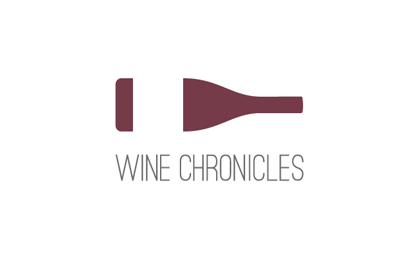 Wine Chronicles
Wine Chronicles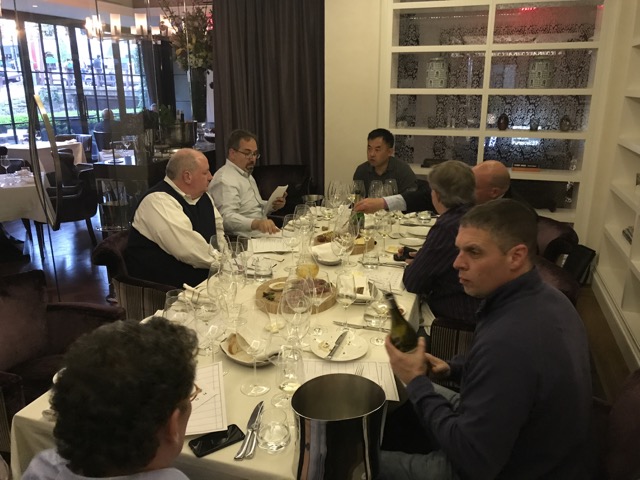
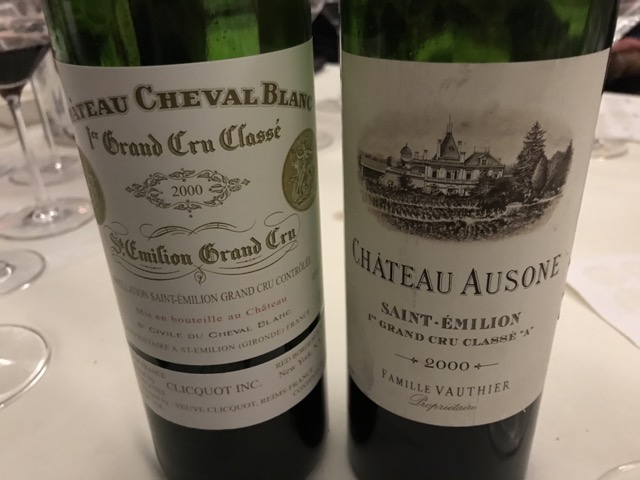
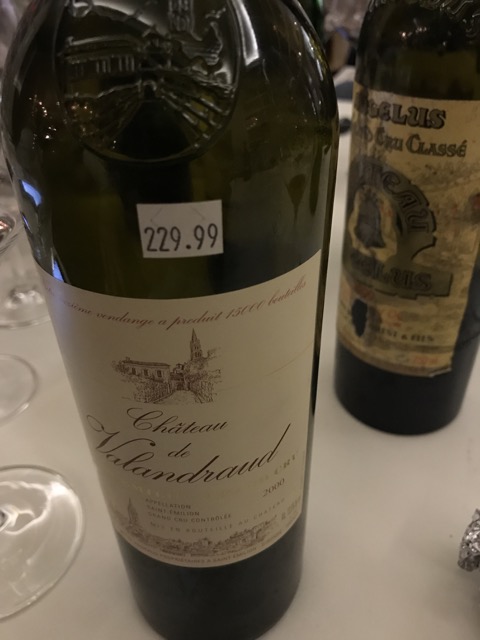

Interesting. Pity that T.Roteboeuf was corked as my own bottle of 2000 was a stunning one in December last year. Glad you took Corbin Michotte into the tasting. I’ve to correct you again – Virginie is a daughter of Murielle and Jean-Luc Thunevin.
Of course, thanks Izak. Correction made.